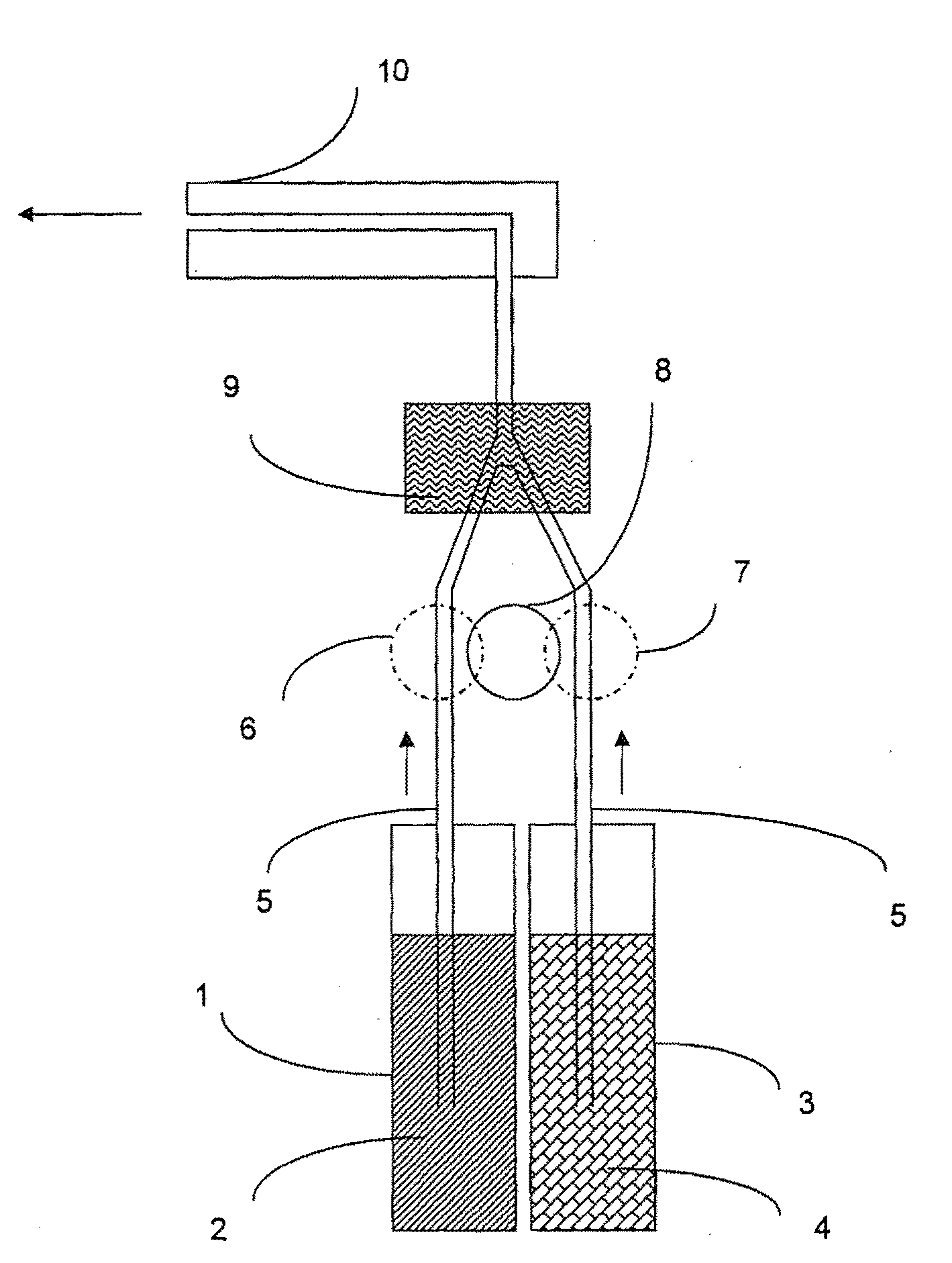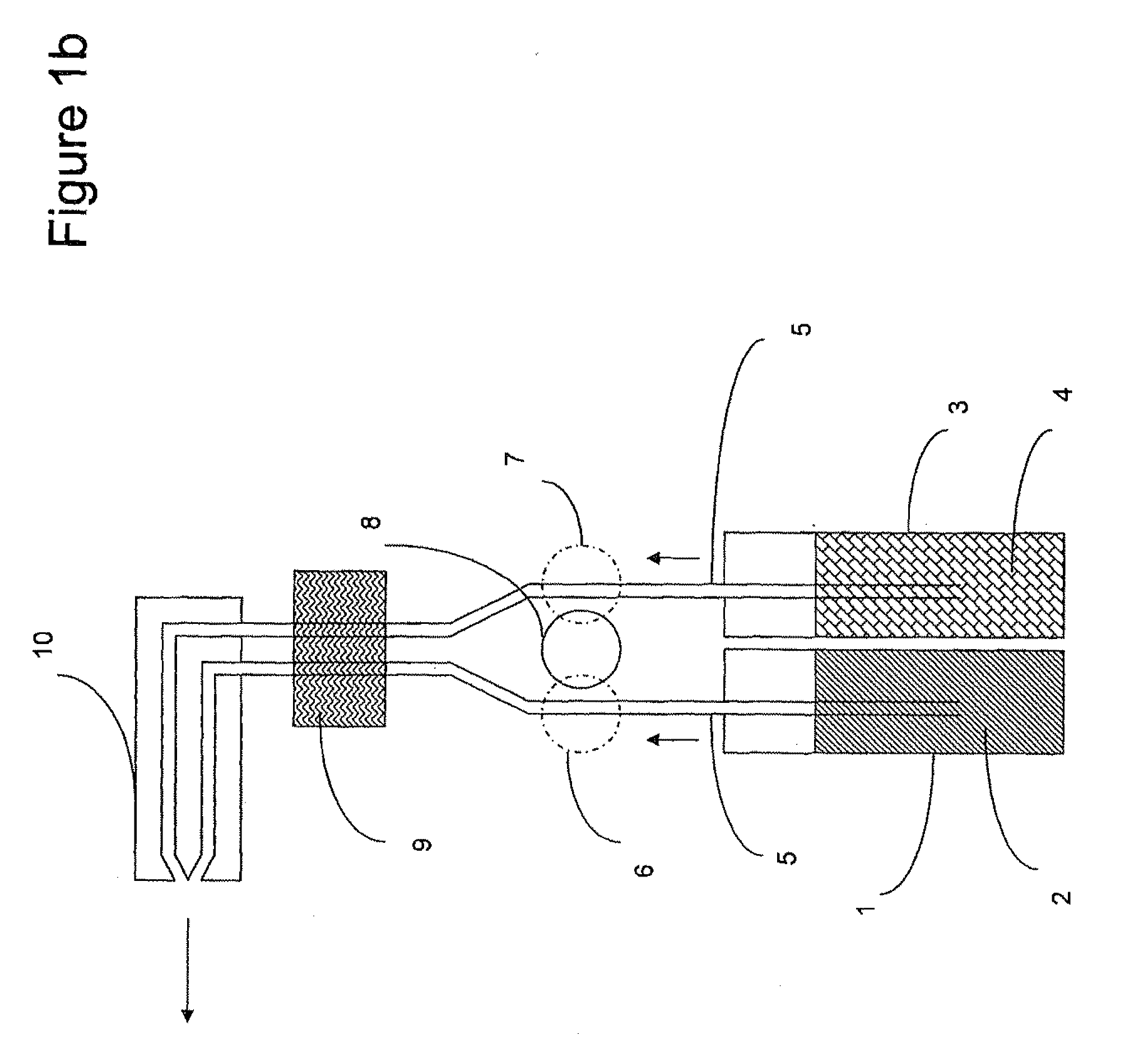Enzymatic peracid generation formulation
a technology of enzymatic peracid and synthesis, which is applied in the direction of peroxyacid/superoxide/ozonide, peroxycarboxylic acid is oftentimes unstable in solution, and multi-component enzymatic peracid generation systems may also suffer from certain problems, so as to improve mixing characteristics and enhance storage stability
- Summary
- Abstract
- Description
- Claims
- Application Information
AI Technical Summary
Benefits of technology
Problems solved by technology
Method used
Image
Examples
example 1
Construction of a katG Catalase Disrupted E. Coli Strain
[0336]The coding region of the kanamycin resistance gene (kan; SEQ ID NO:26) was amplified from the plasmid pKD13 (SEQ ID NO:27) by PCR (0.5 min at 94° C., 0.5 min at 55° C., 1 min at 70° C., 30 cycles) using primers identified as SEQ ID NO:28 and SEQ ID NO:29 to generate the PCR product identified as SEQ ID NO:30. The katG nucleic acid sequence is provided as SEQ ID NO:31 and the corresponding amino acid sequence is SEQ ID NO:32. E. coli MG1655 (ATCC® 47076™) was transformed with the temperature-sensitive plasmid pKD46 (SEQ ID NO:33), which contains the λ-Red recombinase genes (Datsenko and Wanner, (2000), PNAS USA 97:6640-6645), and selected on LB-amp plates for 24 h at 30° C. MG1655 / pKD46 was transformed with 50-500 ng of the PCR product by electroporation (BioRad Gene Pulser, 0.2 cm cuvette, 2.5 kV, 200 W, 25 μF), and selected on LB-kan plates for 24 h at 37° C. Several colonies were streaked onto LB-kan plates and incubate...
example 2
Construction of a katE Catalase Disrupted E. Coli Strain
[0337]The kanamycin resistance gene (SEQ ID NO:26) was amplified from the plasmid pKD13 (SEQ ID NO:27) by PCR (0.5 min at 94° C., 0.5 min at 55° C., 1 min at 70° C., 30 cycles) using primers identified as SEQ ID NO:37 and SEQ ID NO:38 to generate the PCR product identified as SEQ ID NO:39. The katE nucleic acid sequence is provided as SEQ ID NO:40 and the corresponding amino acid sequence is SEQ ID NO:41. E. coli MG1655 (ATCC® 47076™) was transformed with the temperature-sensitive plasmid pKD46 (SEQ ID NO:33), which contains the A-Red recombinase genes, and selected on LB-amp plates for 24 h at 30° C. MG1655 / pKD46 was transformed with 50-500 ng of the PCR product by electroporation (BioRad Gene Pulser, 0.2 cm cuvette, 2.5 kV, 200 W, 25 μF), and selected on LB-kan plates for 24 h at 37° C. Several colonies were streaked onto LB-kan plates and incubated overnight at 42° C. to cure the pKD46 plasmid. Colonies were checked to confi...
example 3
Construction of a katG Catalase and katE Catalase Disrupted E. Coli Strain (KLP18)
[0338]The kanamycin resistance gene (SEQ ID NO:26) was amplified from the plasmid pKD13 (SEQ ID NO:27) by PCR (0.5 min at 94° C., 0.5 min at 55° C., 1 min at 70° C., 30 cycles) using primers identified as SEQ ID NO:37 and SEQ ID NO:38 to generate the PCR product identified as SEQ ID NO:39. E. coli MG1655 KatG1 (EXAMPLE 1) was transformed with the temperature-sensitive plasmid pKD46 (SEQ ID NO:33), which contains the λ-Red recombinase genes, and selected on LB-amp plates for 24 h at 30° C. MG1655 KatG1 / pKD46 was transformed with 50-500 ng of the PCR product by electroporation (BioRad Gene Pulser, 0.2 cm cuvette, 2.5 kV, 200 W, 25 μF), and selected on LB-kan plates for 24 h at 37° C. Several colonies were streaked onto LB-kan plates and incubated overnight at 42° C. to cure the pKD46 plasmid. Colonies were checked to confirm a phenotype of kanR / ampS. Genomic DNA was isolated from several colonies using ...
PUM
| Property | Measurement | Unit |
|---|---|---|
| Temperature | aaaaa | aaaaa |
| Fraction | aaaaa | aaaaa |
| Fraction | aaaaa | aaaaa |
Abstract
Description
Claims
Application Information
 Login to View More
Login to View More - R&D
- Intellectual Property
- Life Sciences
- Materials
- Tech Scout
- Unparalleled Data Quality
- Higher Quality Content
- 60% Fewer Hallucinations
Browse by: Latest US Patents, China's latest patents, Technical Efficacy Thesaurus, Application Domain, Technology Topic, Popular Technical Reports.
© 2025 PatSnap. All rights reserved.Legal|Privacy policy|Modern Slavery Act Transparency Statement|Sitemap|About US| Contact US: help@patsnap.com



